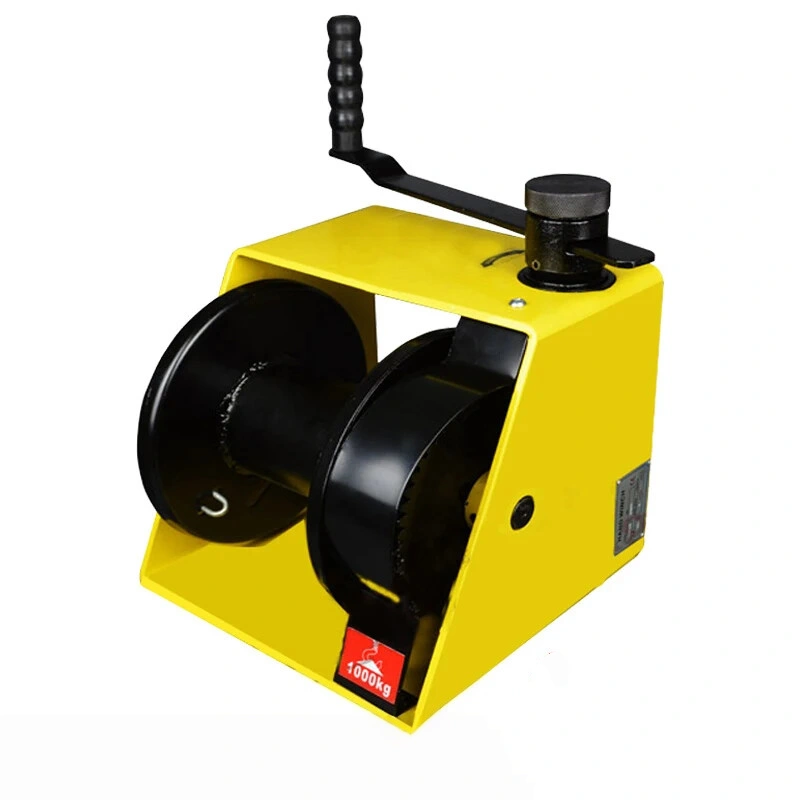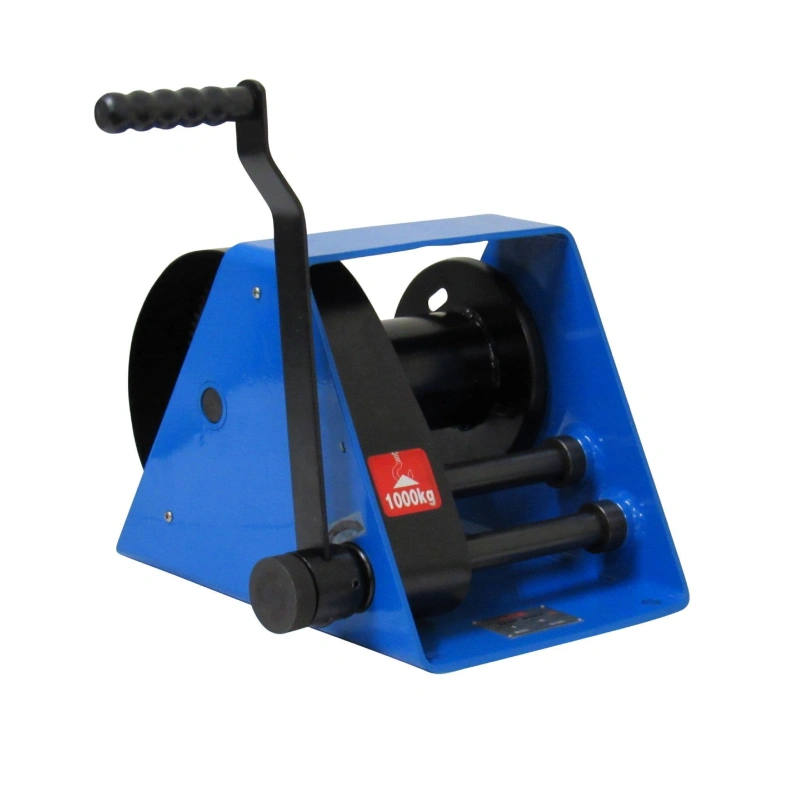A hand winch is a simple yet powerful tool that lets you lift or pull heavy objects by turning a handle. You gain a mechanical advantage through gears, making tough jobs much easier.
People use hand winches in construction, marine, and entertainment settings because of their reliability. You can find different types to suit your needs, as shown below:
Type of Hand Winch | Description |
|---|---|
Manual Hand Winches | Used for their simplicity and versatility, especially where power is lacking. |
Electric Hand Winches | Handle heavier loads and offer more power. |
Hydraulic Hand Winches | Built for high load capacities in industrial settings. |
Key Takeaways
A hand winch is a manual tool that helps lift or pull heavy objects by turning a handle, making tough jobs easier.
Choose the right type of hand winch based on your needs: manual for simplicity, electric for power, and hydraulic for heavy industrial use.
Safety features like automatic brakes are crucial in hand winches to prevent accidents and ensure load stability during operation.
Regular maintenance, including cleaning and inspecting cables, extends the life of your hand winch and keeps operations safe.
Select a hand winch that matches your load capacity and environmental conditions for optimal performance and reliability.
What is a Hand Winch?
Definition
A hand winch is a mechanical device you use to lift, pull, or position heavy loads. You operate it by turning a handle, which winds a cable or rope around a drum. This tool gives you a mechanical advantage, making it possible to move objects that would be too heavy to handle on your own.
Hand winches work well in places where electricity is not available, such as remote job sites or outdoor environments. You often find hand winches in construction, marine, and entertainment industries because they offer reliable manual operation and controlled force application.
Tip: Hand winches simplify tough lifting and pulling tasks, letting you work safely and efficiently even in challenging conditions.
Key Components
When you look at hand winches, you notice several key components that make them effective and safe. Each part plays a specific role in the operation:
Component | Function |
|---|---|
Drum | Stores and dispenses the cable or rope, keeping it organized and ready. |
Handle | Lets you crank the winch, applying manual force to move the load. |
Gear Mechanism | Transfers force from the handle to the drum, increasing mechanical advantage. |
Brake System | Prevents the load from slipping or unwinding, ensuring controlled operation. |
Cable/Rope | Connects the winch to the load, providing strength and durability. |
You also find protective housing in many hand winches, which keeps the internal parts safe and maintains structural integrity. The crank handle allows you to rotate the drum manually. The gear train multiplies your effort, so you can move heavier loads with less force.
The brake mechanism controls the load, stopping it from moving unexpectedly. The cable or rope links the winch to the object you want to move.
Powerful Machinery designs hand winches with robust steel frames and heavy-duty braking systems. These features help you work safely and extend the lifespan of the winch.
The automatic brake and free-spooling drum found in Powerful Machinery’s GR Hand Winch provide extra safety and convenience, especially when you need to secure loads or release the cable smoothly.
Operation Mechanism
Hand winches use a simple but effective operation mechanism. You turn the handle, which rotates the drum. The gear system inside the winch multiplies the force you apply, so you can lift or pull much heavier loads than you could with your own strength alone.
This mechanical advantage comes from the gear train, which converts your effort at the handle into a greater force at the drum.
When you use a hand winch, the brake system keeps the load secure. If you stop turning the handle, the brake engages and holds the load in place. This feature is important for safety, especially when you work with heavy objects.
High-quality hand winches, like those from Powerful Machinery, include automatic brakes and durable construction to prevent accidents and ensure reliable performance.
Note: Always check the load capacity and inspect the cable before using a hand winch. Proper maintenance and regular inspection help you avoid equipment failure and keep your work safe.
Hand winches give you control over heavy lifting and pulling tasks. You can use them in many settings, from construction sites to boat docks. The combination of key components, mechanical advantage, and safety features makes hand winches a valuable tool for professionals and hobbyists alike.
How a Hand Winch Works?
When you use a hand winch, you rely on a simple but effective process. You start by turning the handle. This action rotates the drum, which winds the cable or rope. The real power comes from the gear mechanism inside the winch.
The gear mechanism multiplies the force you apply, making it possible to move heavy loads with less effort.
The gear mechanism works by transferring your hand’s motion to the drum. As you turn the handle, the gear mechanism increases your input force. Most manual hand winches offer a force multiplication ratio of 2 to 1.
In some situations, this ratio can reach 3 to 1. This means you can lift or pull objects that are two or three times heavier than what you could move with your own strength.
A light-duty hand winch uses a drum and gear mechanism to wind the rope smoothly. This setup gives you controlled movement and steady force. The gear mechanism also helps you maintain control when lowering a load. If you stop turning the handle, the brake system engages and holds the load in place.
You might wonder how a hand winch compares to an electric winch. Here is a quick comparison:
Feature | Hand Winch | Electric Winch |
|---|---|---|
Power Source | Manual effort | Electric motor |
Speed | Slower operation | Faster operation |
Power | Less powerful | More powerful |
Safety | Higher risk of injury | Generally safer |
Weight Capacity | Lower weight capacity | Higher weight capacity |
Ease of Use | Requires physical strength | Operated at the push of a button |
The gear mechanism in a hand winch requires you to use physical strength. You get slower but precise control. The gear mechanism in an electric winch uses a motor, so you can move heavier loads faster and with less risk of injury.
Tip: Always check the gear mechanism for wear before each use. A well-maintained gear mechanism ensures safe and efficient operation.
When you understand how the gear mechanism works, you can use your hand winch safely and get the most out of its lifting power.
Types of Hand Winches
Manual Hand Winches
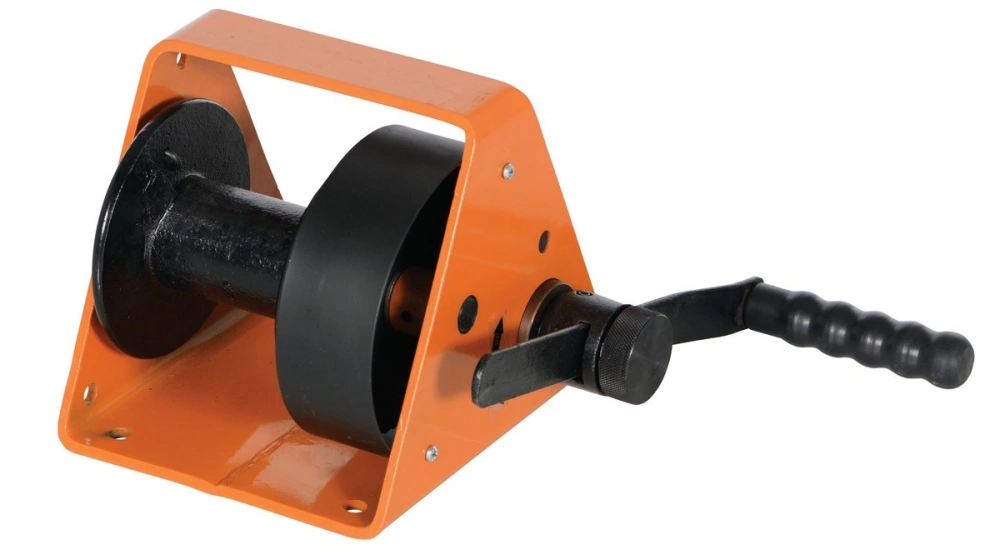
Manual hand winches use your strength to lift or pull loads. You turn a handle, which moves a drum and winds the cable or rope. These winches work well in places where you do not have electricity.
You can use them for jobs like loading boats, moving equipment, or lifting materials on construction sites. Manual hand winches are simple to install and easy to maintain. They cost less than automated hand winches and do not need a power source.
Powerful Machinery offers a range of manual winches, including the GR Hand Winch and HWV Series Manual Winch. These products feature strong steel frames, automatic brakes, and flexible designs. You can rely on them for safe and efficient lifting in many environments.
Automated Hand Winches
Automated hand winches use electric motors to do the heavy work for you. You press a button or switch, and the winch pulls or lifts the load. These winches handle heavier loads and work faster than manual models.
You often see automated hand winches in factories, workshops, or places where you need to move large objects frequently.
Here is a quick comparison between manual and automated hand winches:
Feature | Hand Winches (Manual) | Electric Winches (Automated) |
|---|---|---|
Power Source | Manual (crank/handle) | Electric motor |
Operation | Human effort required | Automated, minimal effort |
Load Capacity | Lighter loads | Heavy-duty loads |
Speed | Slower | Faster |
Installation | Simple, no power needed | Requires power source |
Maintenance | Low | Higher |
Cost | Lower upfront cost | Higher initial investment |
Best For | Remote areas, emergencies | Industrial, frequent use |
Automated hand winches save time and reduce physical effort. You should choose them when you need to move heavy loads quickly or often.
Gear Systems
Hand winches use gear systems to give you more control and power. You can find single-speed and dual-speed gear systems. Single-speed gear systems provide high torque, which means you can lift heavy loads with steady, controlled movement.
These systems move more slowly and may need more maintenance because of higher friction.
Dual-speed gear systems offer two settings. You can switch between high torque for heavy loads and faster speeds for lighter tasks. Dual-speed systems run more efficiently and need less maintenance. They also reduce wear and tear on the winch.
Feature | Single-Speed Gear System | Dual-Speed Gear System |
|---|---|---|
Torque | High, good for heavy loads | Lower, but still effective |
Efficiency | Less efficient, more friction | More efficient, faster speeds |
Speed | Slower, controlled movement | Faster, balanced approach |
Maintenance | More frequent maintenance is needed | Less frequent maintenance is required |
You should choose the gear system that matches your job. If you need precise control, single-speed works best. If you want speed and flexibility, dual-speed is a better choice.
Features and Advantages
Core Features
When you choose a hand winch, you want a tool that delivers both strength and convenience. The best models offer features that make your work easier and safer. Here are the most important qualities you should look for:
Winch capacity that matches or exceeds your load requirements.
Line speed that allows you to wind or unwind the cable efficiently.
Cable type and length suited for your specific tasks.
Durability and material, such as corrosion-resistant steel or aluminum, for long-lasting use.
Brand reputation and warranty give you peace of mind.
Cost factors that balance quality and value.
Ease of setup and maintenance, so you spend less time on installation and repairs.
A top-notch hand winch combines these features, making it a reliable tool for lifting and pulling in any environment.
Safety and Reliability
Safety stands at the core of every tool you use for heavy lifting. Automatic brakes in hand winches engage instantly when you stop turning the handle. This action locks the drum and keeps your load secure, even if you pause during operation.
You can trust this feature when working on steep slopes or lifting heavy materials. The brake system maintains load stability, which helps prevent accidents and protects both you and your equipment.
You also benefit from robust construction and mechanical simplicity. Fewer moving parts mean fewer chances for failure, so your tool stays reliable over time. Regular checks and proper use further enhance safety.
Powerful Machinery Product Value
Powerful Machinery designs hand winches that meet the highest standards for demanding industries. You get a tool with a rugged build, automatic brakes, and a low-maintenance gearbox. The table below shows why these winches stand out:
Maintenance Consideration | Description |
|---|---|
Robust Build Quality | Requires less frequent servicing due to its durability. |
Mechanical Simplicity | Fewer parts lead to lower chances of failure. |
Long Service Life | Proper maintenance can extend lifespan to decades. |
You can use these winches in construction, marine, and industrial settings. While formal certification is not always required, Powerful Machinery’s products meet strict internal and international standards. This commitment ensures your tool performs safely and reliably, even in the toughest environments.
Tip: Choose a hand winch from a trusted brand like Powerful Machinery to ensure you get the best in safety, durability, and performance.
Applications of Hand Winches
Hand winches serve as a pulling or lifting tool in a wide range of applications. You can use them in construction, marine, transportation, and even entertainment settings. Their design gives you precision and control, making them essential for both professionals and hobbyists.
Industrial Uses
In industrial environments, you often rely on hand winches for lifting and pulling heavy loads. These tools help you move materials, operate climbing walls, and handle equipment safely. The table below shows typical load capacities for different industrial tasks:
Application | Load Capacity |
|---|---|
General industrial use | Up to 10,000 pounds |
Climbing wall operation | N/A |
You might use hand winches for construction projects, automotive recovery, and towing. For example:
Construction: Transporting materials to higher locations.
Automotive: Vehicle recovery and towing operations.
Marine: Raising sails and deploying anchoring systems.
When you need to recover a vehicle or move heavy equipment, hand winches provide the strength and reliability you require. Powerful Machinery’s GR Hand Winch and HWV Series Manual Winch offer robust solutions for these demanding tasks.
Marine and Construction
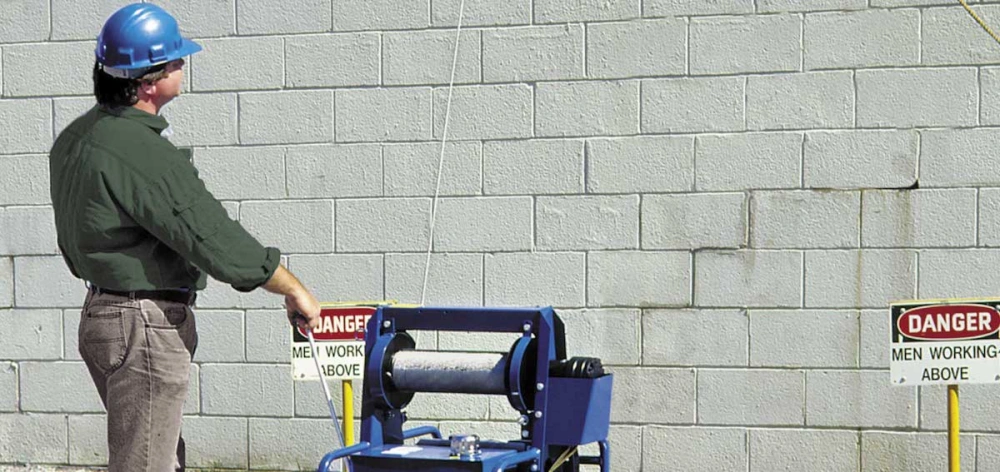
Hand winches play a vital role in marine applications and construction sites. In marine environments, you use them for docking, fishing, and rescue operations. The table below highlights how corrosion resistance matters in these settings:
Application | Description | Corrosion Resistance Feature |
|---|---|---|
Docking | Assists in guiding vessels into docking spots and securing them in place. | Stainless steel prevents degradation from saltwater. |
Fishing | Used for hoisting nets and heavy catches, reducing strain on fishermen. | Galvanized steel withstands rusting and decay. |
Rescue Operations | Lifts and moves debris or stranded boats, crucial in high-pressure situations. | Durable materials ensure reliability under tough conditions. |
On construction sites, you depend on hand winches for lifting and pulling building materials. These winches handle loads from 500 pounds to over 1,000 pounds, making them perfect for moving supplies and equipment.
You also use them for towing and recovery tasks, especially when you need to reposition vehicles or machinery.
Recreation and Personal Use
You can use hand winches for recreation and personal projects. Off-roading enthusiasts rely on them for vehicle recovery, often needing 2,000 to 4,000 pounds of pulling power.
You might use a hand winch for towing boats, launching watercraft, or setting up outdoor equipment. In entertainment, hand winches help with stage rigging and moving props safely.
Powerful Machinery’s hand winches give you dependable performance in every setting. Whether you work in construction, marine, or enjoy outdoor adventures, you benefit from their durability and ease of use.
Installation, Maintenance, and Selection
Installation Guidelines
You must install your hand winch correctly to ensure safe and efficient operation. Follow these steps for a secure setup:
Step | Description |
|---|---|
1 | Position the hand winch over the chosen area and check alignment with a level. |
2 | Mark drill holes for the base to guide accurate drilling. |
3 | Drill into the surface, matching drill bits to your mounting hardware. |
4 | Align the winch again, then secure it by tightening screws or bolts. |
5 | Attach the cable or rope as instructed by the manufacturer. |
6 | Inspect the system for stress or faults. |
7 | Test with a load and watch for irregularities. |
8 | Cycle lifting and lowering to check for slippage. |
9 | Inspect all components after testing. |
10 | Maintain the winch with regular cleaning and lubrication. |
Tip: Always follow the manufacturer’s instructions for your manual mechanical device to maximize safety.
Safe Operation
Operating a hand winch safely protects you and your equipment. Review common hazards and how to avoid them:
Safety Hazard | Mitigation Strategy |
|---|---|
Overloading the Winch | Stay within the winch’s rated limits. |
Using Incorrect Gear | Use only approved accessories. |
Improper Winch Engagement | Never engage under load. |
Handling the Winch Line Bare-Handed | Wear gloves to prevent injuries. |
Standing in the Danger Zone | Keep a safe distance from the winch during use. |
Inspect your winch for damage or wear before each use.
Use the right equipment for your task.
Wear protective gloves and gear.
Keep bystanders away from the operational area.
Maintenance Tips
Regular maintenance extends the life of your mechanical device. Use these best practices:
Clean your winch after each use to remove dirt and debris.
Lubricate moving parts to reduce wear.
Inspect all components for signs of damage.
Apply anti-rust oil and waterproof protection.
Test the winch’s function and load capacity regularly.
If you notice problems, troubleshoot with these steps:
Wind the rope evenly and avoid overloading.
Lubricate gears if cranking becomes difficult.
Check the brake system if the winch does not hold the load.
Replace frayed or broken rope sections.
Clean and lubricate if you hear unusual noises.
Inspect and replace damaged gears or ratchet mechanisms.
Note: Routine care and prompt repairs help prevent accidents and costly downtime.
Choosing the Right Hand Winch
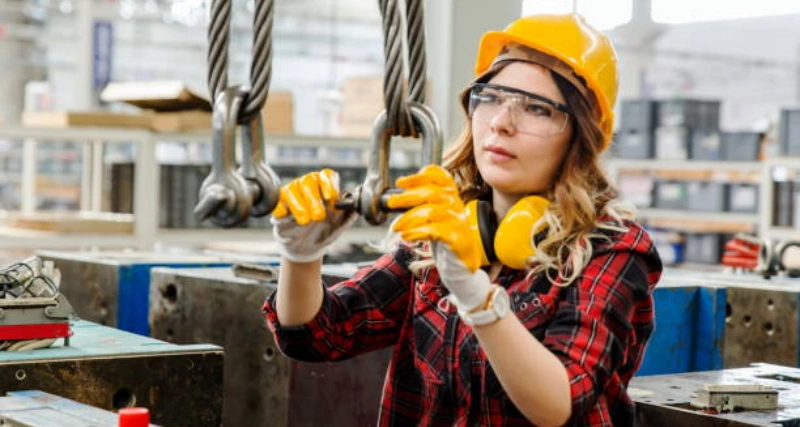
Selecting the best hand winch depends on your needs. Consider these factors:
Load capacity: Choose a winch that matches your lifting or pulling requirements.
Frequency of use: Pick a winch suited for occasional or frequent tasks.
Power source availability: Use a hand winch in remote areas without electricity.
Environmental conditions: Select a winch designed for harsh or wet environments.
Safety features: Look for automatic brakes and sturdy construction.
Cost and maintenance: Balance price with durability and ease of upkeep.
Noise and cleanliness: Consider where you will use the winch.
Powerful Machinery offers hand winches with robust steel frames, automatic brakes, and flexible designs. You can find models like the GR Hand Winch and HWV Series Manual Winch, which provide reliable performance for industrial and recreational applications.
Tip: Always review product specifications and certifications before making your choice.
Conclusion
Hand winches give you reliable lifting and pulling power in many settings. When you understand how each mechanism works, you improve both safety and efficiency:
Feature | Benefit |
|---|---|
Precision Control | Improves safety and operational efficiency |
Safety Mechanisms | Prevents accidents and equipment damage |
You find hand winches in urban, natural, and offshore environments. Each setting brings unique challenges:
Environment | Challenges |
|---|---|
Urban Settings | Noise, emissions, and local regulations |
Protected Natural Areas | Wildlife disruption and risk of spills |
Offshore Operations | Marine risks and the need for corrosion-resistant equipment |
Today, you see new trends shaping the market:
Safety features and smart technology are growing priorities.
Customizable solutions are in high demand.
Users want durability and a lower total cost of ownership.
Powerful Machinery stands out as a trusted provider. You should always match your winch choice to your specific needs and environment for the best results.
FAQ
What is the main difference between a hand winch and a come-along?
A hand winch mounts to a fixed surface and uses a crank handle. A come-along is portable and uses a lever. You use a hand winch for heavier, stationary tasks. You use a come-along for lighter, mobile jobs.
How do you know when to replace the cable on your hand winch?
Check the cable for fraying, broken strands, or rust. If you see any damage, replace the cable right away. Using a damaged cable can lead to accidents or equipment failure.
Can you use a hand winch for vertical lifting?
Yes, you can use a hand winch for vertical lifting if the model supports it. Always check the manufacturer’s guidelines and never exceed the rated load capacity. Safety comes first.
What maintenance does a hand winch require?
You should clean the winch after each use. Lubricate moving parts and inspect for wear or damage. Replace worn cables and check the brake system often.
Tip: Regular maintenance helps your hand winch last longer and keeps every lift safe.

